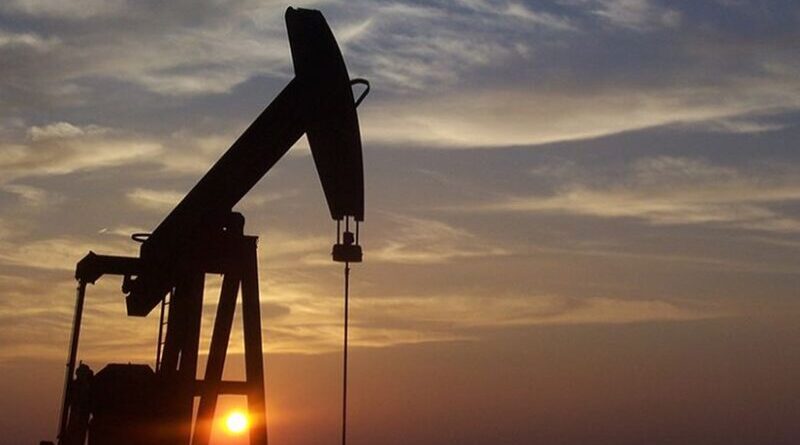No Need For Panic Over Global Crude Oil Price After Saudi Attack – OpEd
On September 14, 2019, there were attacks on two Aramco plants at Abqaiq and Khurais plants, which have a capacity to process 7 million barrels per day (m b/d) of crude in Saudi Arabia. Saudi Arabia said that 5.7million b/d of oil output was temporarily suspended due to the attacks.
The blasts at the oil installation sin Saudi Arabia has caused huge shock and surprise all over the world, creating fear about security issues relating to oil installations, global crude oil supply disruption possibilities and consequent price increase of crude oil.
The shock was more due to the fact that such vital oil installation in Saudi Arabia has been left inadequately defended, particularly since Saudi Arabia’s economy largely depends upon crude oil export income and Saudi Arabia is one of the largest producers of crude oil in the world.
While Saudi Arabia has reported that it has already restored 70 percent of the crude oil production that was lost due to the devastating attack and balance would be recovered soon, the global concerns about the supply disruption possibilities due to the unforeseen reasons remain.
Oil import dependent countries like China, India, South Korea, Japan naturally are highly concerned about such disruption possibilities.
India depends on import of crude to the extent of 80% of requirement and more than 230 million tonne per annum of crude oil is being imported.
Any disruption in global crude oil supply and consequent price increase of crude oil would considerably upset the stability of the Indian economy.
In such circumstances, it is necessary that import dependent countries should take holistic view of the global crude oil scenario and what could be price of crude oil in the global market from time to time, including duringthe adverse period of unforeseen disruption in supply.
Findings of the study
Nandini Consultancy Centre (www.nandinichemical.com) a chemical business consultancy organization based at Singapore and Chennai (India) has conducted detailed investigative study and has published a report discussing the global future crude oil demand supply scenario and making price forecast up to 2023.
As concluded in the report, holistic view of crude oil supply scenario and price fluctuation possibilities make itc learly evident that alarming situation is unlikely to arise in the coming years and certainly any supply disruption for length of time and any abnormal increase in the price in foreseeable future is unlikely.
The extensive report highlights several aspects that include the following:
Supply disruption possibilities
Conflicts in oil producing Middle East countries and Africa would continue leading to disturbing situation. This may happen frequently, if not regularly. However, the global crude oil reserve scenario is comfortable and several producing countries are in position to step up the crude oil production at short notice, if necessary.
For example, in the wake of blast in Saudi Arabia oil installations the US President has authorized release from Strategic Petroleum Reserve (SPR) of 630 million bbls of crude, if needed (amount to be decided later). OPEC and its non-OPEC allies can increase output from part of their 3.7 m b/d spare capacity to make up for the shortfall, if required.
While some existing oil wells may have to be closed down due to aging, new exploration efforts are underway to account for any shortfall in production due to aging of wells and increase in demand in the coming years.
Therefore, supply would remain balanced with the demand and any long term supply disruption is unlikely.
Price fluctuation possibilities
New exploratory efforts would become more capital intensive.
Likely cooperation or informal understanding between oil producing countries to coordinate their pricing policy, to avoid free fall in the price of the crude oil is possible. To what extent this will happen is not clear.
However,the price stability is likely to be maintained to a large extent, since most of the oil exporting countries are heavily dependent on oil export income and would not like to see a situation where consumer resistance to higher oil price would lead to any fall in demand.
There is compelling need for oil producing countries to keep the crude oil price above the economic level, by ensuring that supply trend would not exceed the demand sharply.
Stringent campaign against eco-unfriendly crude oil usage and efforts to find eco-friendly substitutes would continue. However, this is unlikely to have significant impact on crude oil demand in the foreseeable future
Inflationary trends would persist, that would lead to higher cost of operations.
While crude oil prices have been fluctuating in 2019, it is not at alarming level.
Contributing points for price fluctuation
Inflationary tendency and rising cost of operation and transportation cost will contribute to price increase at 1 to 1.5 % on an average per year.
In the event of crude oil supply disruption,which may happen only for short period, speculators would try to jack up prices. However, this is unlikely to have serious impact on the price, since most producing and consuming countries keep strategic reserve to overcome any supply shortage for short period.
Speculative factors will contribute to price increase at 0.5% to 0.7 % on an average per year.
Considering the contributing points mentioned above as well as the past price behavior, the average price of global crude oil (considering Brent) is forecast to be in the range of 60 and 80 USD per barrel between 2019 and 2023, according to the Nandini Consultancy Centre.

